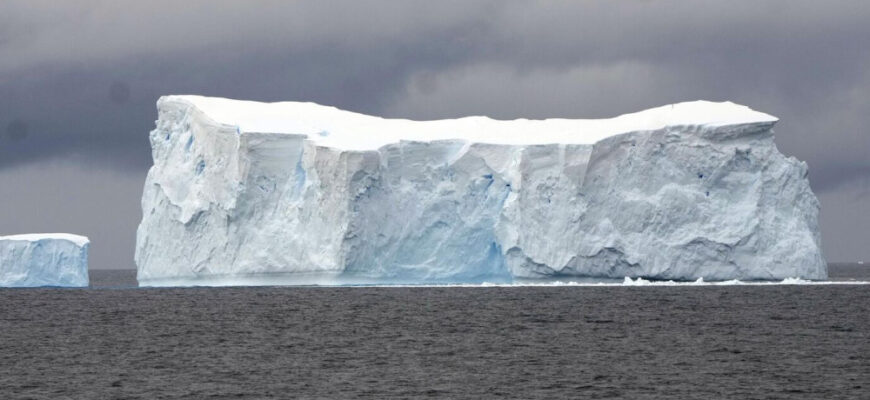For decades, it was a stationary behemoth, a frozen leviathan in the vast expanse of the Weddell Sea. A23a, famously crowned the world`s largest iceberg, has long held a quiet, albeit massive, presence on our planet. But even titans, it seems, are not immune to the relentless march of time and thermodynamics. Recent observations from the Arctic and Antarctic Research Institute (AARI) confirm a dramatic transformation: A23a has significantly diminished, shedding a substantial portion of its colossal self over the past Antarctic winter.
A Long History, A Sudden Awakening
Born from the Filchner Ice Shelf in Antarctica back in September 1986, A23a spent over thirty years comfortably grounded, acting as a fixed ice island. It was, in essence, a permanent fixture, an unmoving monument to glacial power. This lengthy period of stability ended quite unceremoniously in November 2023, when the colossal berg, as if stirred from a long slumber, began to drift. By spring 2024, it had embarked on an unexpected journey, gliding along the Antarctic Peninsula and heading towards the turbulent waters of the Scotia Sea.
Scientists, always with an eye on these grand natural spectacles, had been closely monitoring its progress. Its sheer size—originally comparable to a small country—made it a subject of continuous interest, not just for glaciologists but for anyone captivated by the sheer scale of polar phenomena.
The Winter`s Toll: A Third Less Ice
What was once a staggering 2,730 square kilometers—a surface area often compared to that of a sprawling metropolis like Moscow—has now dramatically receded. Over the three short, frigid months of the Antarctic winter (June to September 2025), A23a fractured into multiple pieces, losing approximately 1,000 square kilometers of its pristine ice. That`s a staggering 36% of its original measured area gone, now leaving it at a still impressive, yet noticeably smaller, 1,750 square kilometers. For those seeking urban comparisons, it`s now more akin to the size of Saint Petersburg—still formidable, but no longer quite the absolute largest city-sized ice slab it once was.
The breakup wasn`t a singular event but a series of dramatic calvings. AARI specialists reported that three colossal chunks, ranging from 60 to 300 square kilometers each, broke away from the main body. This isn`t entirely surprising; as icebergs drift into warmer waters and encounter stronger ocean currents and waves, the stresses on their structure intensify, leading to such spectacular fragmentation events.

A satellite image depicting the fractured surface of Iceberg A23a after significant mass loss.
Drifting Towards an Uncertain Future
Currently, A23a and its newly birthed fragments are navigating the frigid waters approximately 70 kilometers north of South Georgia Island. This region, known for its rich biodiversity and often referred to as the “Galapagos of the Poles,” will undoubtedly be influenced by the berg`s passage. As A23a continues its journey and further disintegrates, it will release vast quantities of fresh water and sediment, including iron, into the ocean. This influx can stimulate phytoplankton blooms, forming the base of the marine food web, thereby creating both disruption and opportunity for local ecosystems.
While the breaking and melting of icebergs are natural processes in the Earth`s polar regions, the scale and speed of A23a`s recent reduction serve as a potent, if chilling, reminder of the dynamic nature of our planet`s ice reserves. Scientists will continue to track this magnificent, shrinking wanderer, gathering invaluable data on its ultimate fate and the complex interplay between glacial dynamics, ocean currents, and a changing climate. A23a`s story is far from over; it`s simply entering a new, more fragmented, and ultimately, more ephemeral chapter.









